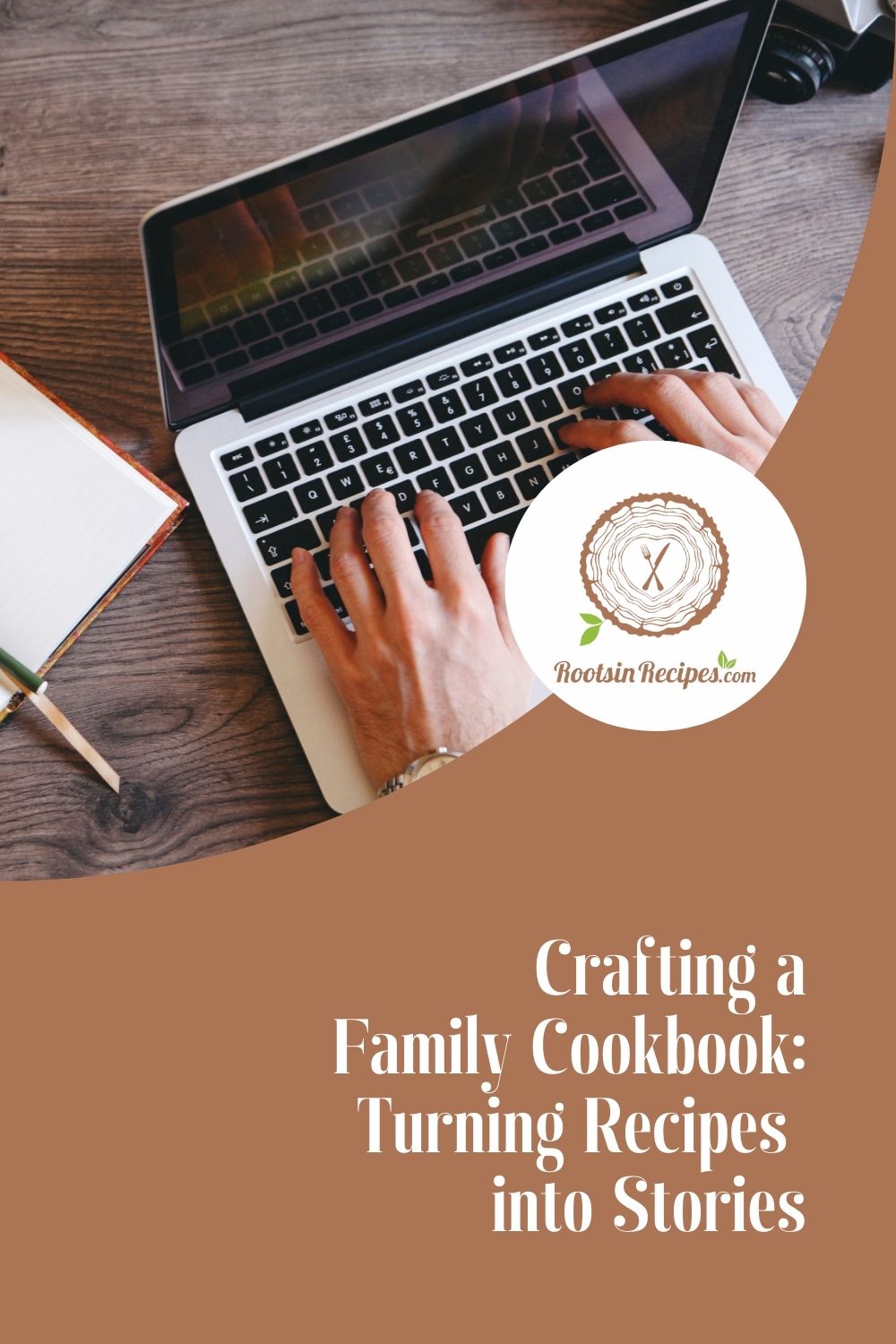
Introduction
A family cookbook is more than just a collection of recipes—it’s a tapestry of stories, traditions, and memories woven together through food. A well-crafted cookbook becomes a treasured keepsake, connecting generations through the shared love of cooking. In this post, we’ll explore how to create a cookbook that’s not only functional but also emotionally resonant, using a storytelling template that transforms recipes into cherished narratives.

Understanding the Importance of Storytelling in Cookbooks
Why does storytelling matter in a cookbook? Imagine flipping through your family cookbook and finding not just a recipe for Grandma’s apple pie, but the story of how she made it for every holiday—how she rolled the dough with a special wooden pin passed down from her mother, or how she let you sneak a slice of apple while she worked. These small, personal details transform a recipe from simple instructions into a living memory that connects generations.
Recipes have a unique power to evoke emotions and create bonds. They remind us of the people who prepared them, the occasions we celebrated, and the feelings we experienced when we gathered to share a meal. By sharing the stories behind your favorite dishes, you’re not just teaching someone how to make food—you’re inviting them to step into your life, feel the warmth of your traditions, and see the world through your family’s lens.
Think about the last time a meal brought you back to a cherished memory. Perhaps it was the smell of fresh bread baking in the oven, transporting you to your childhood kitchen, where your dad kneaded dough with flour-covered hands. Or maybe it was the taste of a familiar spice that reminded you of a holiday trip and the laughter shared around the table. These sensory connections are powerful and deeply personal, and they’re exactly what storytelling in cookbooks aims to capture.
A storytelling approach in your family cookbook does more than just preserve recipes—it safeguards moments, emotions, and traditions. It ensures that these elements aren’t lost to time but are instead lovingly passed on to future generations. Imagine your grandchildren opening the cookbook decades from now, reading about how your family celebrated birthdays or how a dish came to symbolize comfort during difficult times. These stories give your recipes a heartbeat, making them more than food; they become a cherished legacy.
By embedding these stories into your cookbook, you create an experience for your readers that is both practical and meaningful. They’ll learn how to recreate your dishes, but more importantly, they’ll feel the love and history woven into every bite. This connection is what elevates a family cookbook from a collection of recipes to a treasured heirloom.
Template for Telling Your Recipe’s Story
Whether you’re crafting a family cookbook on paper, using digital tools, or creating it through RootsInRecipes.com, a good template can help bring your recipes to life. At RootsInRecipes.com, this template is designed to seamlessly guide you in filling out the HISTORY section for each recipe, ensuring your family’s stories and traditions are preserved alongside the dishes you love.
Here’s a structured template to transform your recipes into heartfelt narratives:
- Introduction:
Begin with a brief overview of your recipe. What is the dish? Why is it special to you? Share a hook to draw readers in—perhaps a memorable occasion or a tantalizing description of the dish.
Example:
“Grandma’s chocolate cake was always the centerpiece of our family celebrations. Its rich, fudgy layers and sweet frosting could bring smiles to anyone’s face.” - Background:
Provide historical or cultural context for the recipe. Where does it come from? Was it passed down through generations? Include details about its origins, such as a specific culture, region, or family tradition.
Example:
“This recipe has been in my family for over 50 years, originating from my grandmother Phyllis, who was known as the ‘chemist in the kitchen.’ She created it during the 1940s, blending her love for chemistry with her passion for cooking.” - Personal Connection:
Explain what this recipe means to you personally. Does it remind you of a loved one, a special time in your life, or a unique experience? Share anecdotes that bring the story to life.
Example:
“Every Sunday, my siblings and I would gather in the kitchen to help Grandma bake this cake. The smell of chocolate in the air and the laughter we shared made these moments unforgettable.” - Variations and Tips:
Discuss how the recipe has evolved or any special tips to make it perfect. Have you made changes to the original? Are there secrets to getting it just right? Share advice to make it accessible for others.
Example:
“Over the years, I’ve added a pinch of espresso powder to the frosting for a richer flavor. Grandma always said, ‘Don’t skimp on the quality of the cocoa—it makes all the difference!’” - Conclusion:
Wrap up by reflecting on the importance of preserving this recipe. How does it connect you to your family, culture, or identity? Why should others cherish it too?
Example:
“This chocolate cake isn’t just a dessert—it’s a legacy. Every time I bake it, I feel connected to my grandmother and the memories she left behind. I hope it brings as much joy to your table as it has to ours.”
Creating a Collaborative Cookbook
Encouraging family members to contribute their recipes and stories can make the cookbook even more special. Start by reaching out to family members and asking for their favorite dishes. Organize a family gathering or create a shared document where everyone can contribute recipes, photos, and memories.
During these gatherings, take notes or record stories about the dishes to include in your cookbook. This collaborative effort will create a richer narrative, foster a sense of unity, and ensure that everyone feels connected to the final product.
The Importance of Presentation
A family cookbook isn’t just about the content—it’s also about how it’s presented. Thoughtful design can make your cookbook even more meaningful. Consider including family photos, hand-drawn illustrations, or scans of old recipe cards. Choose fonts, colors, and layouts that reflect your family’s personality.
A beautifully designed cookbook enhances the reading experience and turns it into a treasured heirloom. Whether it’s a printed book, a handwritten journal, or a digital creation, the presentation should reflect the love and care that went into making it.
Incorporating Technology: RootsInRecipes Makes It Easy
At RootsInRecipes, we’ve taken the challenge out of creating a family cookbook, combining the power of technology with the heart of storytelling. Our platform is designed to help you effortlessly preserve your family’s culinary heritage, making it easy to turn your recipes and stories into a beautifully crafted cookbook.
Here’s how simple it is to create your cookbook with RootsInRecipes:
- Sign Up
Getting started is quick and easy! Create an account today. You can cancel anytime, giving you complete flexibility. - Upload Your Recipes and Stories
Using our user-friendly interface, upload your recipes, family stories, and images. Share the anecdotes, memories, and traditions behind each dish to bring your recipes to life. Whether you’re scanning handwritten notes or typing out modern-day favorites, RootsInRecipes makes organizing your family’s legacy seamless. - Download Your Cookbook
Once your recipes and stories are uploaded, download your cookbook in PDF format. You can choose to download individual recipes or the entire collection. Share your PDF with family and friends or keep it as a digital keepsake for future generations. - Order Printed Copies
Want a tangible heirloom? Order beautifully printed copies of your cookbook! Our 8.5x11 premium color glossy coil-bound books are perfect for gifting or preserving in your family library. Printing costs are affordable.
By choosing RootsInRecipes, you ensure that your recipes and the stories behind them remain accessible and preserved for generations. Whether it’s through digital downloads or printed books, our system allows your cookbook to grow and evolve as new recipes and memories are added over time.
Preserve your culinary heritage today with RootsInRecipes—where your family’s food and stories come together effortlessly.
Conclusion
Crafting a family cookbook is about more than food—it’s about preserving your family’s story. By weaving personal anecdotes and traditions into your recipes, you create a legacy that connects generations.
Celebrate your family’s unique history through this meaningful project, and watch as it becomes a cherished heirloom for years to come. What’s the first recipe you’d include in your family cookbook? Happy cooking!